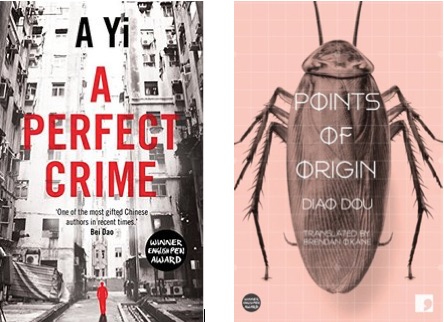This first post in a two-part series continues a tradition of holiday gift suggestions that began at China Beat (2008-2012) — a blog that currently lives on as a Twitter feed (@chinabeat ) and is in the process of being archived by the Digital Commons at the University of Nebraska.
In this edition, we focus on 2015 publications dealing with Chinese themes. We have given contributors leeway to slip in titles that came out before this year, but they have only read recently. We also invited them to suggest books that veer partly or completely away from China, yet have elements that make them particularly interesting to anyone interested in knowing more about the country. While asking for two book ideas apiece, we sometimes got more than we bargained for.
James Carter:
@jayjamescarter, https://twitter.com/jayjamescarter
Of my two selections, the first “one” is actually three: Amitav Ghosh’s Ibis trilogy, the last of which (River of Fire) is published this year.
Full disclosure: I’ve not finished the trilogy, but the reason I recommend it is that (in addition to being great fiction) it breaks the “China vs. the West” dyad by showing the global nature of the opium trade and the realignment of economic and political power in the 19th century. The connections among India, China, and Britain are clear and nuanced, but also important are the roles played by East Africa, North America, and Southeast Asia.
My second selection is Howard French’s China’s Second Continent, which was published last year but I just taught this summer. I was really pleased with how it explained to students a lot about not only China and Africa, but the USA. as well. The book does a remarkable service to the diversity of African countries and the range of Chinese people living and working there. More than one student made comparisons about China’s imperialistic behavior in French’s book and the behavior of Europeans and (especially) Americans in China today, or at least recently.
Alec Ash
@alecash, https://twitter.com/alecash
A Perfect Crime
A Yi (trans. Anna Holmwood)
I’ve already interviewed the author of this novel for the blog, but can’t resist giving it another mention here. A Perfect Crime is perhaps best billed as China’s L’étranger, and it’s utterly fascinating — a visceral and (be warned) pessimistic engagement with Chinese society from a cop turned novelist. It’s readable in a single sitting, but you might finish that sitting a bit shaken up.
Point of Origin
Diao Dou (trans. Brendan O’Kane)
More contemporary Chinese literature for my second recommendation, as fiction is often the best way to get Chinese voices where non-fiction is castrated. Brendan O’Kane brings us a collection of stories from a less well-known author (also published in the great collection, Shi Cheng: Short Stories from Urban China). Surreal, satirical, surprising. Fingers crossed that “Diaodou-esque” becomes an adjective.
Paul French
@chinarhyming, https://twitter.com/chinarhyming
2015 was a good year for China-related photography books and exhibition catalogues. The Met’s China Through the Looking Glass exhibition was a lavish feast of costume, ceramics, and objets for those interested in how China has influenced the imagination of western costumiers, artists, and filmmakers. The catalogue was equally lavish with photography from Platon and essays by curator Andrew Bolton and artistic director Wong Kar Wei, among others. For those intrigued by chinoiserie, it is essential to study a copy page-by-page with a mulled wine.
The number of beautifully conceived and self-published photography books concerning China is growing apace. Shanghai-based James H. Bollen (who’s photography book inspired by JG Ballard’s memories of Shanghai, Jim’s Terrible City, was the subject of a Q&A last year on this blog) has just published Wallpaper — The Shanghai Collection. Bollen has captured the remaining fragments of Shanghai’s condemned old buildings, revealed by the remorseless wrecking ball that continues to afflict the city. Photographs of shredded wallpaper, abandoned posters, calendars, and all manner of decorative ephemera are juxtaposed with apt quotes from William Morris’s 1870s lectures on Hopes and Fears for Art — ‘Have nothing in your houses that you do not know to be useful or believe to be beautiful.’ A good new year’s resolution I think.


